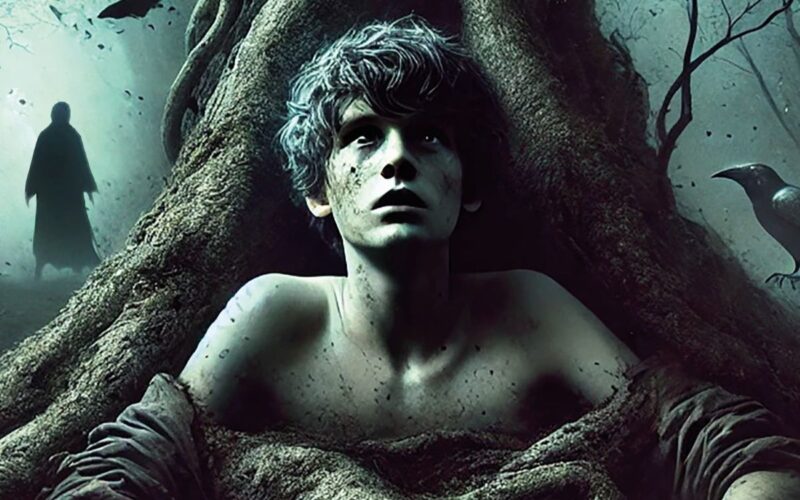“Aodhán is the story of a young god, looking for his role in everyday life who meets other deities and demons along the way with a ‘Game of Thrones’ kind of approach,” says Buckle, who explains that he has always been an avid reader of the fantasy genre and his favourite authors include J.R.R. Tolkien, C.S. Lewis, Terry Brookes, Raymond Feist and Diana Wynne Jones.
“I am also a great fan of Greek and Norse Mythology and therefore, a reader of Rupert Graves and Neil Gaiman,” he continues. “The story of Aodhán first formed in my mind when I was a teenager reading these books and dreaming stories inspired by them. Slowly this developed into something far more more. I found myself writing a screen script for Aodhán which never made it to Netflix (!) so I decided to transform it into a novel. From there, it took a life of its own, including biblical figures and ancient deities from different mythologies that co-exist and are vying for influence.”

Buckle’s novel includes Apollo, Athena, Aphrodite, Hermes, and others from Greek mythology, Yahweh and His archangels Micha-El, Gabri-El from Abrahamic religion, and even hints of Norse myth with a brief allusion to Loki.
His pantheon-spanning universe is one of Aodhán’s most distinctive features and Buckle weaves these usually-disparate mythologies together with an internal logic.
“The Greek gods are depicted as ‘fallen beings, stripped of full divinity after an ancient defeat, now living in exile among mortals,” he explains. “This premise establishes a unique playing field where Olympian gods hide in an old mansion, licking their wounds, while the Judeo-Christian Heaven holds sway in the cosmos.”

As events unfold, grudging alliances form across cultural lines. For example, the archangels view the Greek gods warily and vice versa, each side haunted by past betrayals and the fear of the other’s agenda. And yet, despite deep distrust, the Greek deities find themselves reaching out to archangels for help against a common foe. And then, there’s the untrustworthy Loki – a Norse trickster – too.
The culture-clash and theological tension is fertile ground for drama, and that’s before the arrival of the Aodhán, who sets off a chain of events that re-ignites the conflict between them all.

Aodhán is a young Eldar god from another dimension, a wildcard in the celestial balance whose powers exceed those of any other being. His existence sends ripples of alarm through all factions; even Yahweh views him as a potential rival and instructs his angels to neutralize the boy if necessary. And will Aodhán join the right gods in the apocalyptic battle that surely follows, or will he fall to the lure of the demoness Satana and her minions?
Aodhán is not only naïve and liable to temptation. He has also wormed his way into the contemporary world. The story is therefore set primarily in the fictitious Rashford Town, in the modern-day rural US state of Ohio. By grounding these fantastical beings in a real-world small town beset by darkness, and juxtaposing the mundane with the supernatural, Aodhán has a palpable sense of history and breadth.
Why not Malta?
“Because the story is that of such grandeur that it needed more than such a small island. However, elements of Malta do seep in, especially in the later books of the trilogy that I have in mind,” smiles Buckle.

In addition to known mythologies, Buckle introduces original cosmic elements – notably The Eldar, an ancient race of godlike entities predating mortal religions, and The Dark, an almost sentient primordial evil, worshipped by cult-like figures on Earth. Its human acolyte, the charismatic villain Marcus Taser, rallies corrupted townspeople with promises of true power from darkness, decrying “the tyranny of false gods and sanctimonious angels”. From Marcus’s perspective, we see how ordinary humans can fall under the sway of cosmic evil, adding an aspect of the ‘occult thriller’ to Buckle’s elaborate world.
Aodhán is, at its core, a dark examination of innocence versus corruption, a motif that is established in the opening chapter, and its opposing themes of light versus darkness play out on both personal and cosmic scales – from the boy’s internal struggle against a seductive demonic influence, to the broader clash between celestial beings and a primordial Dark force. By the climax, these tensions culminate in Aodhán’s tragic fall from grace, as the once-innocent boy embraces a nearly apocalyptic darkness.
Another prominent theme is the burden of power and destiny. Different factions view Aodhán as a linchpin of fate – some as salvation, others as doom – and this tug-of-war underscores the novel’s exploration of free will versus fate.
And amongst the grand supernatural conflicts Aodhán also touches on on familial and filial bonds amid the chaos, on human intimacy love, sacrifice, vulnerability, regret.
“And also hope,” adds Buckle. “I love the line from Lord of the Rings where the character of Arwen always insists ‘There is always hope!’
And that is what this novel is about.
And if Aodhán did become a Netflix blockbuster, who would Buckle pick to play him?
“Hmmm. I’d need a talented young actor, so I’d go for Kit Connor or Shawn Mendes. Yeah, dreaming never hurt anyone!”










